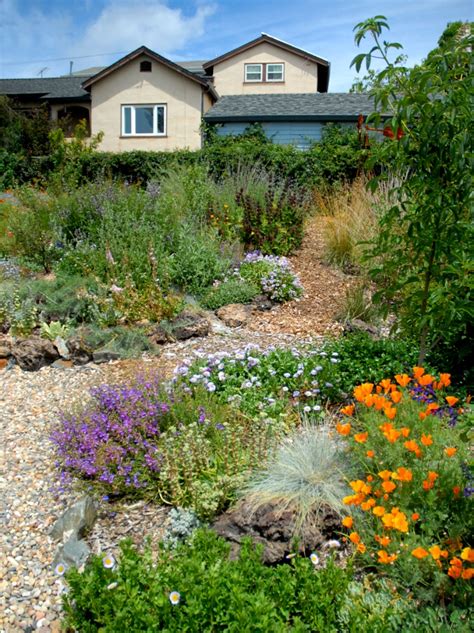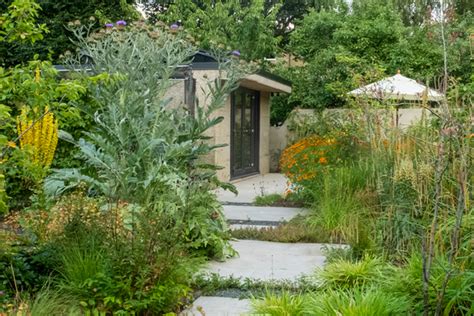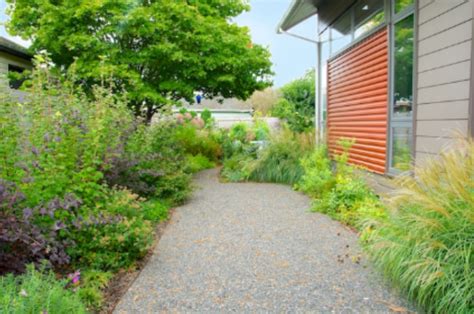Designing a low-maintenance garden is an ideal solution for those who love nature but have limited time for upkeep. By carefully selecting plants and planning the layout, you can create an attractive and sustainable outdoor space that requires minimal care. A well-designed low-maintenance garden not only saves time but also reduces water usage, cuts down on weeding, and enhances the overall aesthetics of your home. Whether you’re a busy professional or simply looking to spend less time on yard work, this guide will provide helpful tips and ideas to achieve a beautiful garden that practically takes care of itself.
Explore this topic thoroughly with shzow.com
1. Introduction
A beautiful garden doesn’t have to be a constant chore. For busy individuals or those who simply desire more time to relax outdoors, a low-maintenance garden offers the ideal solution. With thoughtful design, you can cultivate a space that is both aesthetically pleasing and effortless to care for. This allows you to revel in the garden’s beauty without the burden of extensive maintenance.
Low-maintenance gardens offer a winning combination of practicality and environmental benefits. By selecting plants that thrive with minimal watering and care, and by designing for reduced weeding and pruning, you can conserve precious water resources and minimize the use of chemical fertilizers and pesticides. This sustainable approach not only benefits the environment but also allows you to enjoy a beautiful outdoor space without the demands of constant attention and upkeep.
This article delves into the advantages of maintaining a low-maintenance garden. We will offer guidance on planning and designing your garden, as well as selecting suitable plants and implementing time-saving gardening techniques. The aim is to help you cultivate a flourishing, hassle-free garden.

2. Benefits of a low-maintenance garden
A low-maintenance garden provides numerous advantages, making it an attractive option for homeowners who value both aesthetics and practicality. One of the key benefits is the significant time saved on upkeep. By incorporating less demanding plants and streamlining gardening tasks, you can cultivate a flourishing garden without dedicating countless hours to its care. This allows for more leisure time to relax and enjoy your outdoor sanctuary, instead of constantly toiling within it.
Beyond saving you time, a low-maintenance garden is also a more sustainable choice. By choosing drought-tolerant plants and minimizing water-intensive gardening practices, you can significantly reduce water consumption, a crucial factor in drought-prone regions. These gardens often require fewer fertilizers and chemicals, resulting in a healthier environment for both plants and the wildlife that inhabit them.
A notable advantage is the decreased maintenance cost. Watering, pruning, and replacing fewer plants translates to savings on gardening supplies, tools, and utilities. Furthermore, the streamlined design minimizes the need for frequent repairs or upgrades to the garden’s structure.
A low-maintenance garden is not just a practical choice, but a beautiful one as well. It offers a tranquil, welcoming oasis that enhances your home, while minimizing the work, expense, and environmental burden of traditional gardening.

3. Planning and designing your garden
To design a low-maintenance garden, prioritize functionality and ease of management. Begin by assessing your available space and envisioning its intended use. Consider incorporating features such as paved walkways, raised garden beds, or gravel areas. These elements minimize the extent of lawn or planted sections needing consistent maintenance, simplifying your gardening efforts.
When planning your garden, consider its overall style. Opt for a design that harmonizes with your home and minimizes maintenance. Simplicity is key, so steer clear of overly complex layouts or intricate plant arrangements that can increase upkeep. Grouping plants with similar water and light needs will simplify care.
To minimize maintenance, choose low-maintenance plants such as native species, succulents, or perennials that flourish in your local climate with minimal care. Additionally, consider incorporating features like mulch or ground cover, which can help suppress weeds and retain moisture, reducing the need for frequent watering and weeding.
With thoughtful planning of the layout and plant selection, your garden can be both visually stunning and effortlessly maintainable. This approach ensures minimal upkeep, allowing you to enjoy its beauty throughout the seasons without constant toil.

4. Choosing low-maintenance plants
The key to a low-maintenance garden lies in selecting the right plants. Opting for native species, those naturally adapted to your region, is a smart choice. These plants are inherently drought-tolerant, pest-resistant, and flourish with minimal upkeep. By choosing natives, you’ll not only lessen your garden workload but also create a haven for local wildlife. These plants attract beneficial insects and birds, enriching the biodiversity of your surroundings.
For water-wise gardening, consider drought-tolerant options like succulents, ornamental grasses, and some perennials. These plants thrive in dry conditions with minimal watering, making them ideal for water conservation. Perennials, in particular, offer the benefit of returning year after year, reducing the need for frequent replanting.
Ground cover plants, such as creeping thyme or sedum, offer a low-maintenance solution by effectively suppressing weeds and maintaining soil moisture. These plants spread naturally, requiring minimal intervention after they are established.
When choosing shrubs or small trees, prioritize varieties that need minimal pruning. Slow-growing or compact species naturally maintain their shape and size, requiring little to no trimming. This ensures a tidy garden with less upkeep.
Selecting resilient and easy-to-care-for plants will result in a beautiful, low-maintenance garden that requires minimal time and effort to flourish.
5. Implementing time-saving gardening practices
Implementing time-saving gardening practices can significantly reduce the amount of work needed to maintain your garden. One effective approach is to use mulch around plants and garden beds. Mulch helps to retain soil moisture, suppress weeds, and reduce the need for frequent watering and weeding. It also adds a finished look to your garden.
Consider installing an irrigation system or soaker hoses to automate watering. Timers can be set to ensure plants receive consistent moisture without requiring daily attention. Drip irrigation systems are particularly efficient, delivering water directly to the plant roots where it’s needed most.
Another time-saving practice is to use landscape fabric or ground covers to reduce weed growth. By preventing weeds from emerging, you’ll cut down on the time spent weeding your garden.
Group plants with similar care requirements together to simplify maintenance tasks. This allows you to address watering, fertilizing, and pruning needs in one go rather than dealing with a variety of different plant needs scattered throughout your garden.
Finally, select low-maintenance garden tools and equipment that can help you work more efficiently, such as ergonomic pruners or a self-cleaning leaf blower, making garden chores quicker and easier.
6. Tips for reducing maintenance tasks
A low-maintenance garden is easier to manage and more enjoyable. Start by choosing plants that require minimal care. Opt for varieties that need little pruning, fertilizing, and watering. Utilize low-maintenance ground covers or mulch to suppress weed growth and soil erosion, thereby reducing the need for frequent weeding and soil management.
To simplify your watering routine, install automatic irrigation systems or timers. These systems deliver consistent moisture to your plants without manual intervention. Furthermore, use slow-release fertilizers or organic amendments to provide your plants with nutrients, minimizing the need for frequent applications.
To keep your gardening tools working well and extending their lifespan, it’s essential to clean and maintain them regularly. By ensuring your tools are in good condition, you’ll minimize the need for time-consuming repairs or replacements, saving you effort and frustration.
Finally, consider accessibility when designing your garden. Create well-defined pathways and avoid overcrowding plants to simplify maintenance tasks such as pruning, weeding, and harvesting. This approach will contribute to a beautiful garden that requires minimal effort to maintain.
7. Conclusion
Designing a low-maintenance garden offers a blend of beauty and practicality, allowing you to enjoy your outdoor space with minimal effort. By carefully planning your garden layout, choosing the right plants, and implementing time-saving practices, you can create an attractive and sustainable garden that requires less upkeep. Selecting native and drought-tolerant plants, using mulch, and automating irrigation are key strategies for reducing maintenance tasks and conserving resources.
Remember that simplicity is key when designing your garden. Opt for easy-to-care-for plants and incorporate features that streamline your gardening routine. Regular maintenance of tools and thoughtful garden design will further enhance your garden’s ease of care.
Ultimately, a well-designed low-maintenance garden not only saves you time and effort but also contributes to a more sustainable and enjoyable outdoor environment. With the right approach, you can achieve a beautiful garden that aligns with your lifestyle and provides a serene space to unwind, without the constant demands of traditional gardening.
shzow.com
